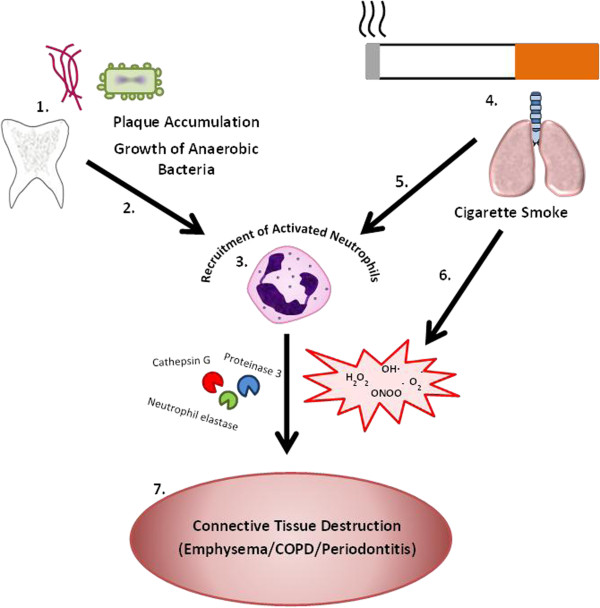Figure 1.

Convergence of the principal triggers of inflammation for periodontitis and common obstructive pulmonary disease on a common pathophysiological process involving neutrophil activation. In the dento-gingival cavity, plaque accumulation leads to the growth of bacteria such as Porphyromonas gingivalis and Fusobacterium nucleatum (1). The release of bacterial proteins and induction of cytokine expression (2) lead to the recruitment of activated neutrophils (3). Particulate matter from cigarette smoke (4) causes the local production of inflammatory cytokines, also leading to the local accumulation of activated neutrophils (5) and providing an oxidant stress to the local tissues (6). The products from inflammatory cells including chemoattractants, proteases and reactive oxygen species can amplify the inflammatory process whilst causing the connective tissue damage seen at both sites (7). The susceptibility to either pathology depends on a heightened downstream process, which may have a common abnormality that makes it more likely for both diseases to develop. COPD, common obstructive pulmonary disease.
